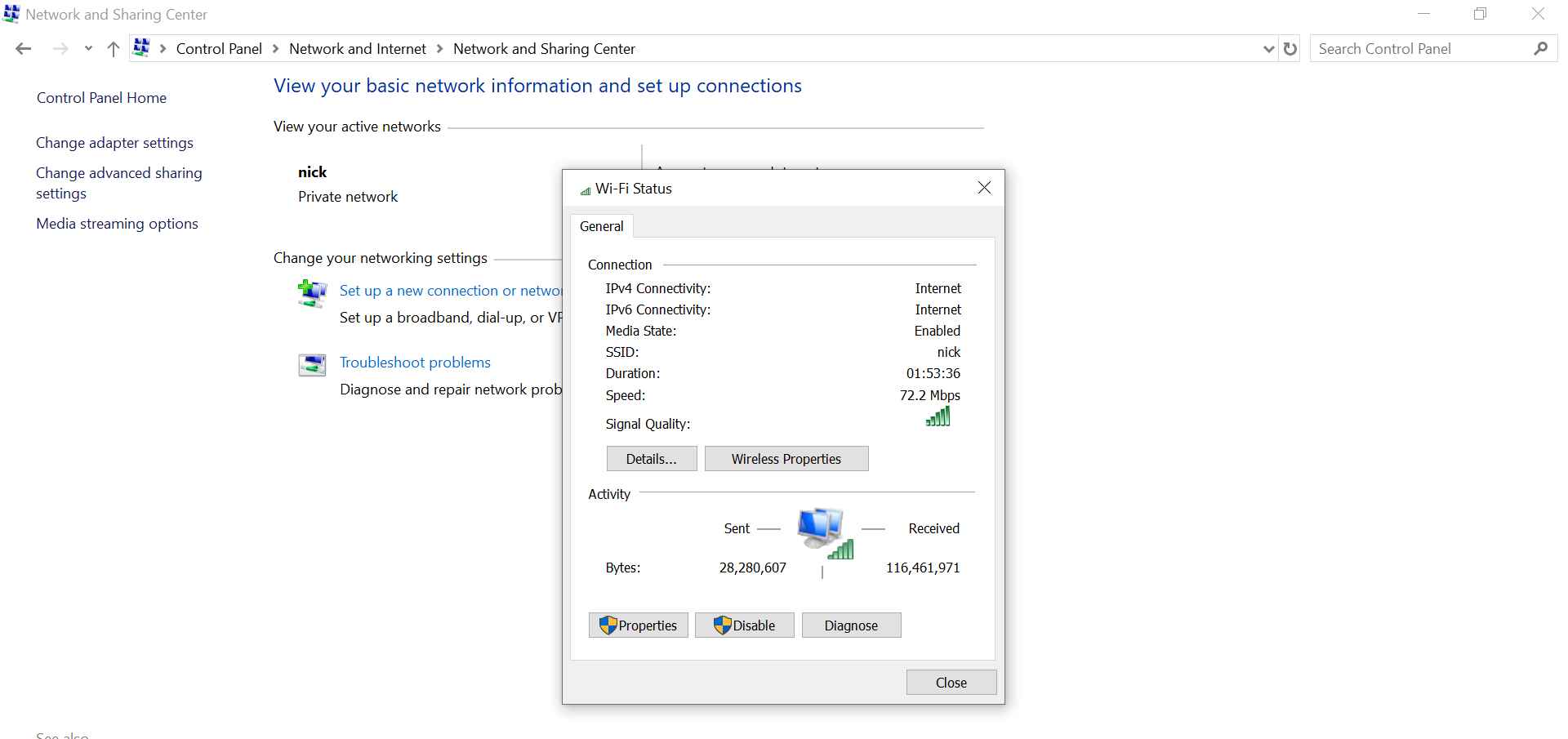

To the right of it, select Run as administrator > Yes.Īt the command prompt, type ipconfig, and then select Enter. Look for the name of your Wi-Fi network within the results, and then find the IP address listed next to Default gateway for that Wi-Fi network. Select Search on the taskbar, type Command prompt. If you can't connect to the network on any device, continue to the next step.Ĭheck to see if there is a problem with the connection to your Wi-Fi router. Do this by using a ping test. If you can connect, the source of the problem is likely due to your device-go to the section Network troubleshooting on your device. On another laptop or phone, try to connect to the same network. If you can't connect to another website, go to the next step. If the website opens, there might be a problem with the specific website. If the "Wi-Fi connected" icon appears on the right side of the taskbar, visit a different website. Try the following steps to help narrow down the source of the problem. The steps you take to restart your modem and router can vary, but here are the general steps.Ĭonnection problems can be due to a variety of reasons-problems with the website, your device, the Wi-Fi router, modem, or your Internet Service Provider (ISP). When you do this, everyone that is connected to your Wi-Fi network will be temporarily disconnected. This helps create a new connection to your internet service provider (ISP). Under Other, select Network Adapter > Run.įollow the steps in the troubleshooter and see if that fixes the problem. Select the Start button, then type settings. Select Settings > System > Troubleshoot > Other troubleshooters. The Network troubleshooter can help diagnose and fix common connection problems. (An indicator light usually shows when it's on.) Make sure the physical Wi‑Fi switch on your laptop is turned on. To learn more about the differences between 2.4 GHz networks and 5 GHz networks, check out Wi-Fi problems and your home layout. If your list of available Wi-Fi networks includes both a 2.4 GHz network and a 5 GHz network, try connecting to the other network. These will appear as separate networks in the list of available Wi-Fi networks. Many consumer Wi-Fi routers broadcast at two different network frequency bands: 2.4 GHz and 5 GHz. Try connecting to a network on a different frequency band. If it says Connected underneath the network name, select Disconnect, wait a moment, and then select Connect again. If it does, select the Wi-Fi network, and they try to connect to it. Select Manage Wi-Fi connections ( >) on the Wi-Fi quick setting, see if a Wi-Fi network you recognize and trust appears in the list of networks. Also, make sure Airplane mode is turned off. Select the "No internet connection" icon on the right side of the taskbar, and make sure Wi-Fi is turned on.


Enter the URL and click okay to save changes and load the proxy configuration.

#View network connections on mac manual#


 0 kommentar(er)
0 kommentar(er)
